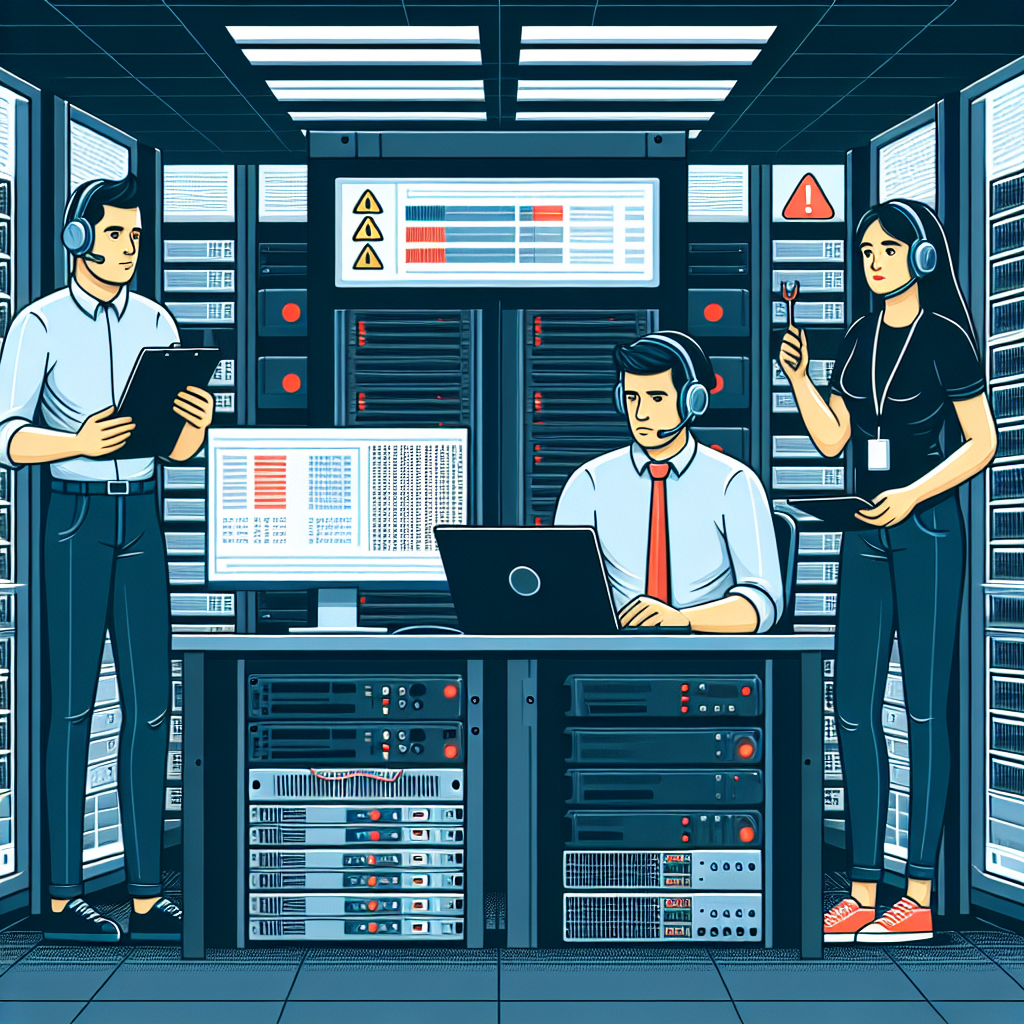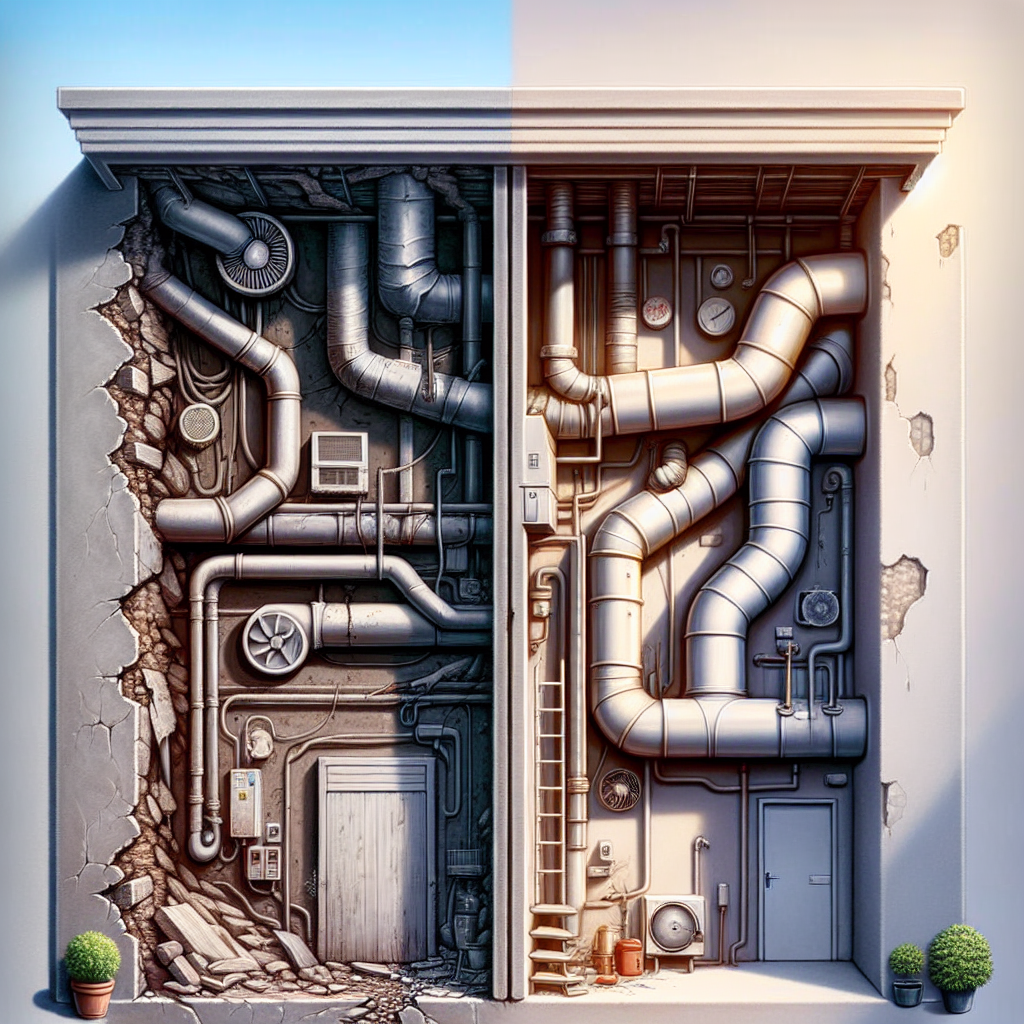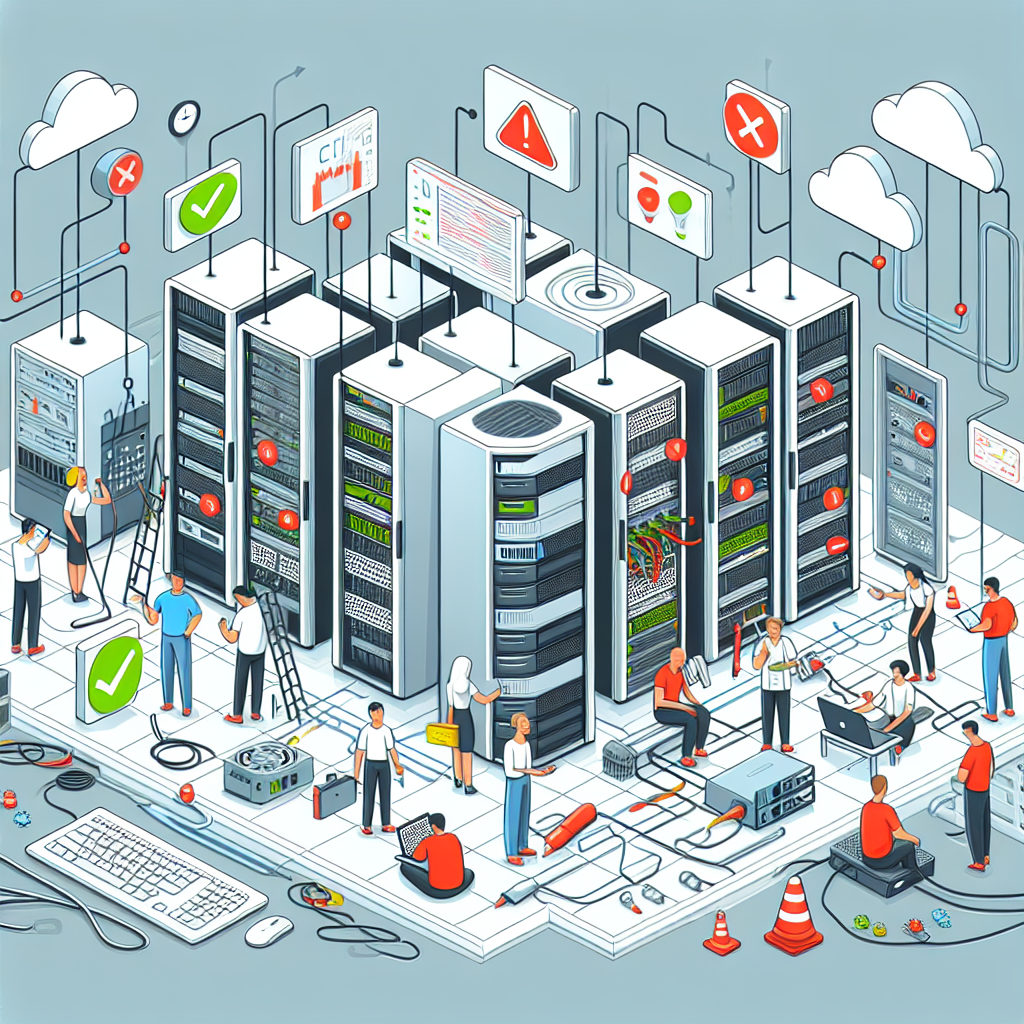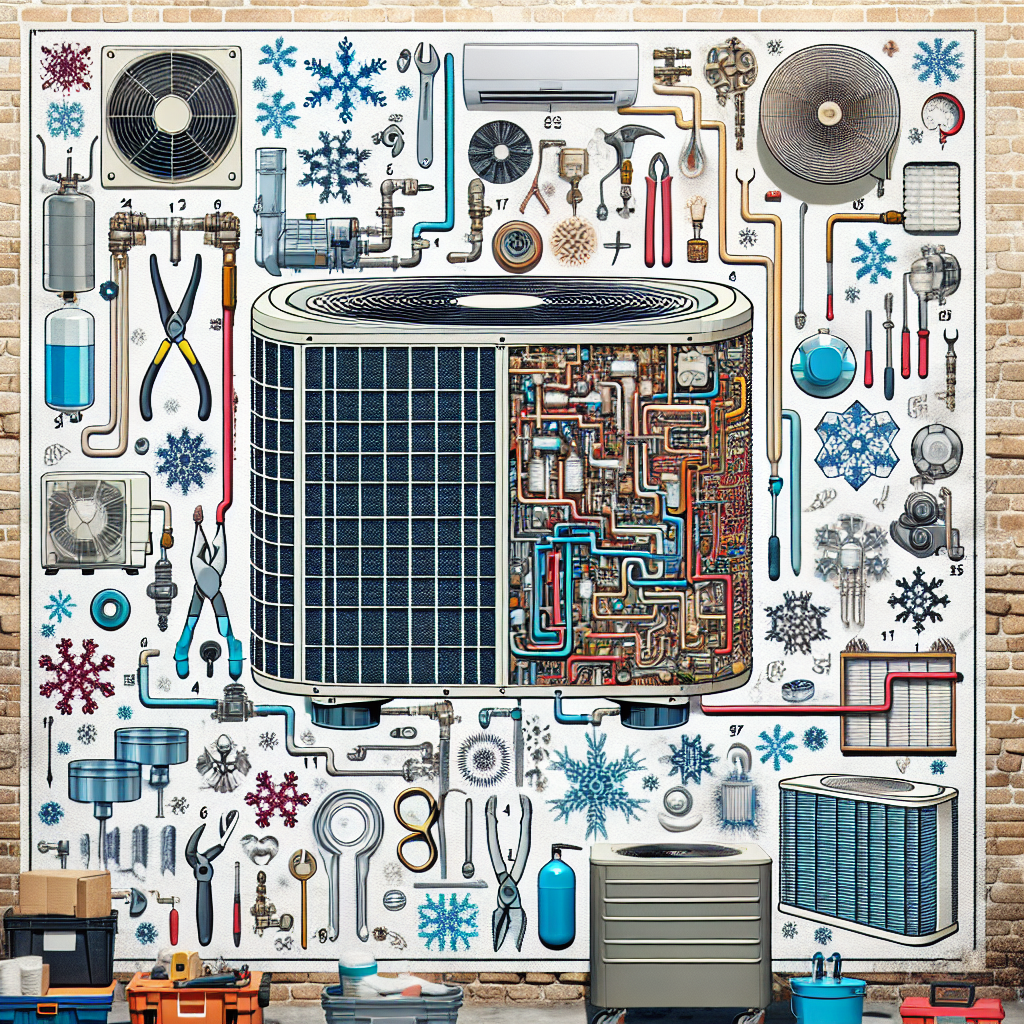Your cart is currently empty!
Tag: Solve

Common Data Center Troubleshooting Issues and How to Solve Them
In today’s digital age, data centers are crucial for storing and managing vast amounts of information for businesses and organizations. However, like any complex system, data centers can experience issues that can disrupt operations and cause headaches for IT professionals. In this article, we will discuss some common data center troubleshooting issues and how to solve them.1. Overheating: One of the most common issues in data centers is overheating. This can be caused by insufficient cooling systems, poor air flow, or equipment that is too close together. To solve this issue, ensure that your data center has adequate cooling systems in place, such as air conditioning units or cooling fans. Additionally, make sure that equipment is spaced out to allow for proper air flow and ventilation.
2. Power outages: Power outages can be a major problem in data centers, as they can lead to data loss and downtime. To prevent power outages, consider investing in a backup power supply, such as uninterruptible power supply (UPS) units or generators. This will ensure that your data center remains operational even during power outages.
3. Network connectivity issues: Another common problem in data centers is network connectivity issues. This can be caused by faulty cables, misconfigured network settings, or overloaded networks. To troubleshoot network connectivity issues, check for faulty cables and replace them if necessary. Additionally, ensure that network settings are configured correctly and that your network is not overloaded with traffic.
4. Hardware failures: Hardware failures can occur in data centers due to age, wear and tear, or improper maintenance. To prevent hardware failures, make sure that equipment is regularly maintained and updated. Additionally, have spare parts on hand in case of emergencies, so that you can quickly replace any faulty hardware.
5. Security breaches: Data centers are prime targets for cyber attacks, as they store sensitive information. To prevent security breaches, ensure that your data center has robust security measures in place, such as firewalls, encryption, and access controls. Regularly update security software and conduct security audits to identify and address any vulnerabilities.
In conclusion, data center troubleshooting can be a challenging task, but with the right strategies and tools in place, you can effectively solve common issues and ensure that your data center remains operational and secure. By addressing issues such as overheating, power outages, network connectivity problems, hardware failures, and security breaches, you can minimize downtime and protect your valuable data. Remember to regularly maintain and update your data center equipment to prevent issues from occurring in the first place.

Common Ventilation Problems and How to Solve Them
Ventilation is an essential aspect of any building to ensure the circulation of fresh air and the removal of stale air. However, like any other system, ventilation systems can encounter problems that can compromise their effectiveness. In this article, we will discuss some common ventilation problems and how to solve them.1. Poor airflow: One of the most common ventilation problems is poor airflow, which can result in stagnant air and unpleasant odors. This can be caused by blocked air vents, dirty filters, or a malfunctioning fan. To solve this issue, start by checking and cleaning the air vents and filters. If the problem persists, consider calling a professional to inspect and repair the fan.
2. Excessive humidity: High humidity levels can lead to mold growth, musty odors, and overall discomfort. This problem can be caused by inadequate ventilation or poor insulation, trapping moisture inside the building. To address this issue, consider installing a dehumidifier or increasing ventilation by opening windows or using exhaust fans. Additionally, ensure that any leaks or water damage are promptly repaired to prevent moisture buildup.
3. Noise: A noisy ventilation system can be disruptive and annoying. This can be caused by loose or damaged components within the system, such as belts, bearings, or motors. To solve this problem, inspect the ventilation system for any loose or damaged parts and tighten or replace them as needed. Additionally, consider installing soundproofing materials to reduce noise levels.
4. Uneven airflow: Uneven airflow can result in certain areas of the building being over-ventilated while others are under-ventilated. This can be caused by poorly designed ductwork or blocked air vents. To address this issue, consider adjusting the vents to ensure proper airflow distribution or installing a zoning system to control airflow in different areas of the building.
5. Odors: Lingering odors can be a sign of poor ventilation, as they indicate that stale air is not being properly removed from the building. To solve this problem, start by identifying the source of the odor and addressing it, such as cleaning up spills or removing garbage. Additionally, consider increasing ventilation by opening windows or using air purifiers to improve air quality.
In conclusion, ventilation problems can impact the comfort and health of building occupants. By addressing common ventilation issues promptly and effectively, you can ensure that your ventilation system functions properly and provides a healthy indoor environment. If you encounter persistent ventilation problems that you are unable to solve on your own, consider seeking the assistance of a professional HVAC technician to diagnose and repair the issue.

10 Common Data Center Troubleshooting Issues and How to Solve Them
Data centers are essential for storing and maintaining crucial information for businesses. However, there are common issues that can arise in data centers that can disrupt operations and compromise data security. In this article, we will discuss 10 common data center troubleshooting issues and provide solutions on how to solve them.1. Overheating: One of the most common issues in data centers is overheating. This can lead to equipment failure and data loss. To solve this issue, ensure that the data center is properly cooled with adequate ventilation and air conditioning systems. Regularly clean and maintain cooling systems to prevent overheating.
2. Power Outages: Power outages can cause data center downtime and data loss. To prevent this issue, invest in uninterruptible power supply (UPS) systems to provide backup power during outages. Implement redundant power sources to ensure continuous power supply to critical equipment.
3. Network Connectivity Issues: Poor network connectivity can disrupt data center operations. To solve this issue, regularly monitor network performance and address any issues promptly. Check cables and connections for any damage or loose connections. Implement network redundancy to ensure uninterrupted connectivity.
4. Hardware Failures: Hardware failures can result in data loss and downtime. To prevent this issue, conduct regular maintenance and monitoring of hardware components. Implement a hardware monitoring system to detect potential failures before they occur. Have spare hardware components on hand for quick replacement.
5. Security Breaches: Security breaches can compromise sensitive data stored in the data center. To solve this issue, implement robust security measures such as firewalls, encryption, and access controls. Regularly update security software and conduct security audits to identify and address vulnerabilities.
6. Data Corruption: Data corruption can lead to data loss and errors in information. To solve this issue, regularly back up data and store backups in a secure offsite location. Implement data integrity checks and verify data integrity regularly to detect and correct any corruption issues.
7. Software Compatibility Issues: Software compatibility issues can cause system errors and data loss. To solve this issue, ensure that all software applications are up to date and compatible with each other. Test software updates in a controlled environment before deploying them in the data center.
8. Cable Management Problems: Poor cable management can lead to network connectivity issues and equipment damage. To solve this issue, organize cables properly and label them for easy identification. Use cable management tools such as cable trays and ties to keep cables neat and organized.
9. Data Center Capacity Overload: Data center capacity overload can lead to performance issues and downtime. To solve this issue, regularly monitor data center capacity and upgrade hardware or expand data center infrastructure as needed. Implement capacity planning to anticipate future growth and prevent overload.
10. Human Error: Human error can result in accidental data loss or equipment damage. To solve this issue, provide training to data center staff on proper procedures and best practices. Implement access controls and permissions to restrict access to critical systems and data.
In conclusion, data center troubleshooting requires proactive monitoring and maintenance to prevent common issues from disrupting operations. By implementing the solutions mentioned above, data center managers can ensure the smooth and efficient operation of their data centers.

Common Air Conditioning Problems and How to Solve Them
Air conditioning is an essential component of any home or office. It helps to keep the indoor environment cool and comfortable during the hot summer months. However, like any other appliance, air conditioning units can develop problems over time. In this article, we will discuss some common air conditioning problems and provide tips on how to solve them.1. Lack of Cooling: One of the most common issues with air conditioning units is a lack of cooling. This can be caused by a variety of factors, such as a dirty air filter, a refrigerant leak, or a malfunctioning compressor. To solve this problem, start by checking and cleaning the air filter. If that doesn’t help, you may need to call a professional to check for refrigerant leaks or compressor issues.
2. Strange Noises: If you notice strange noises coming from your air conditioning unit, such as banging, rattling, or squealing, it could be a sign of a mechanical problem. This could be caused by loose parts, a damaged fan blade, or a worn-out belt. To solve this problem, turn off the unit and inspect it for any loose or damaged parts. If you are unable to identify the issue, it’s best to contact a professional for assistance.
3. Water Leaks: If you see water leaking from your air conditioning unit, it could be due to a clogged condensate drain line or a frozen evaporator coil. To solve this problem, start by checking and clearing the condensate drain line. If the issue persists, you may need to defrost the evaporator coil or replace it if it is damaged.
4. Short Cycling: Short cycling is when the air conditioning unit turns on and off frequently, which can lead to increased energy consumption and wear and tear on the unit. This could be caused by a dirty air filter, a malfunctioning thermostat, or an oversized unit. To solve this problem, start by replacing the air filter and checking the thermostat settings. If the issue continues, you may need to consult with a professional to determine if the unit is the right size for your space.
5. Uneven Cooling: If you notice that some areas of your home are cooler than others, it could be due to blocked vents, dirty air ducts, or a malfunctioning thermostat. To solve this problem, start by checking and opening all vents in your home. Then, clean the air ducts to ensure proper airflow. If the issue persists, you may need to recalibrate or replace the thermostat.
In conclusion, air conditioning problems can be frustrating, but many of them can be easily solved with some basic troubleshooting. However, if you are unable to identify or fix the issue on your own, it’s best to contact a professional HVAC technician for assistance. By addressing these common air conditioning problems promptly, you can ensure that your unit continues to operate efficiently and effectively.
